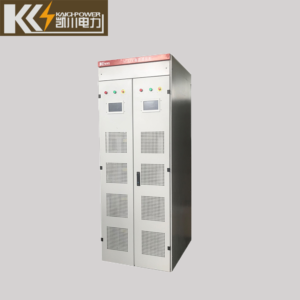
The design and implementation of Advanced Programmable Filters (APF) are critical aspects of signal processing and system optimization. APF filters offer unparalleled flexibility and adaptability, but their effective utilization requires careful consideration of design strategies and implementation techniques. This article explores the various aspects of APF filter design, including design methodologies, hardware and software implementation techniques, and considerations for achieving optimal performance.
Design Methodologies: APF filter design begins with selecting an appropriate design methodology based on system requirements, performance objectives, and available resources. Common design methodologies include Butterworth, Chebyshev, and elliptic filters, each offering different trade-offs between passband ripple, stopband attenuation, and transition bandwidth. Design parameters such as filter order, cutoff frequency, and ripple specifications are determined based on desired filter characteristics and application constraints.
Hardware Implementation: Hardware implementation of APF filters involves selecting suitable platforms and architectures for realizing filter algorithms in hardware. Digital Signal Processors (DSPs), Field-Programmable Gate Arrays (FPGAs), and Application-Specific Integrated Circuits (ASICs) are commonly used platforms for implementing APF filters. Each platform offers different advantages in terms of computational performance, flexibility, and cost-effectiveness, depending on the specific requirements of the application.
Software Implementation: Software implementation of APF filters involves developing algorithms and software code to realize filter functionality in software-based platforms. High-level programming languages such as MATLAB, Python, and C/C++ are commonly used for software implementation of APF filters. Software libraries and toolkits provide pre-existing functions and algorithms for designing and simulating APF filters, enabling rapid prototyping and development of signal processing applications.
Considerations for Effective Implementation: Several factors must be considered to ensure the effective implementation of APF filters in signal processing systems. These include computational complexity, memory requirements, latency, and real-time performance. Careful attention must be paid to algorithm optimization, hardware/software partitioning, and resource allocation to meet performance objectives while minimizing implementation overhead.
Validation and Testing: Validation and testing are crucial steps in the design and implementation process to verify the functionality and performance of APF filters. Simulation tools, hardware-in-the-loop (HIL) testing, and prototyping platforms enable designers to evaluate filter performance under various operating conditions and input scenarios. Validation ensures that APF filters meet design specifications and provide the desired signal processing capabilities in real-world applications.
Integration with Existing Systems: Integrating APF filters into existing signal processing systems requires careful consideration of compatibility, interoperability, and system interfaces. APF filters must seamlessly integrate with other system components, such as sensors, actuators, and communication interfaces, to ensure smooth operation and data exchange. Standardization of interfaces and protocols facilitates interoperability and simplifies integration efforts.
Optimization and Performance Tuning: Optimization and performance tuning are ongoing processes aimed at improving the efficiency, robustness, and scalability of APF filters. Techniques such as algorithm optimization, parallel processing, and hardware acceleration can enhance filter performance and reduce computational overhead. Performance tuning involves adjusting filter parameters, optimizing algorithms, and fine-tuning system configurations to achieve optimal performance under varying operating conditions.
Conclusion: In conclusion, effective design and implementation of APF filters are essential for realizing their full potential in signal processing and system optimization. By leveraging appropriate design methodologies, hardware/software platforms, and implementation techniques, designers can develop APF filters that meet performance objectives, address application requirements, and integrate seamlessly into existing systems. Continuous optimization, validation, and testing ensure that APF filters deliver the desired signal processing capabilities and enhance system performance across diverse applications and industries.